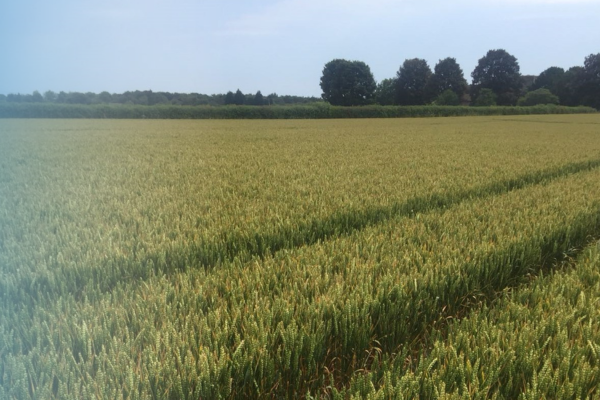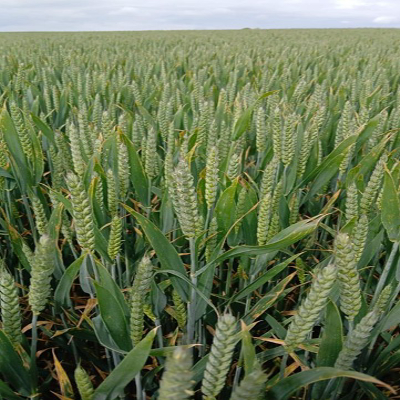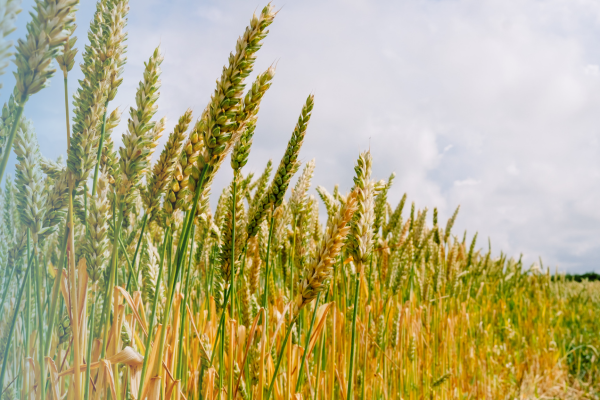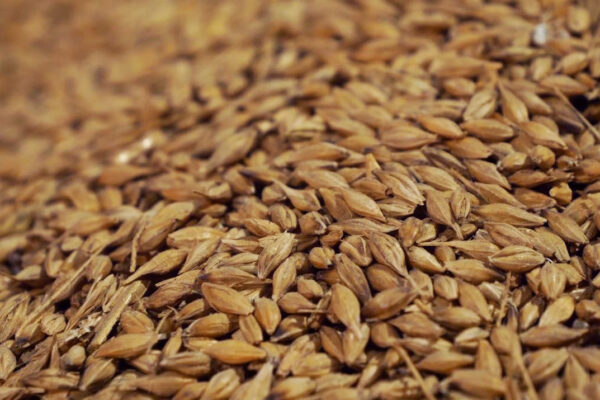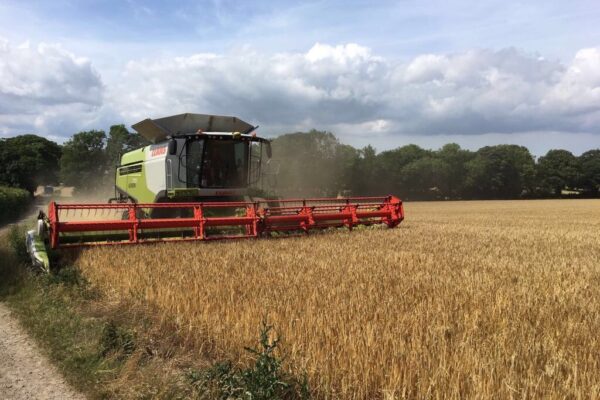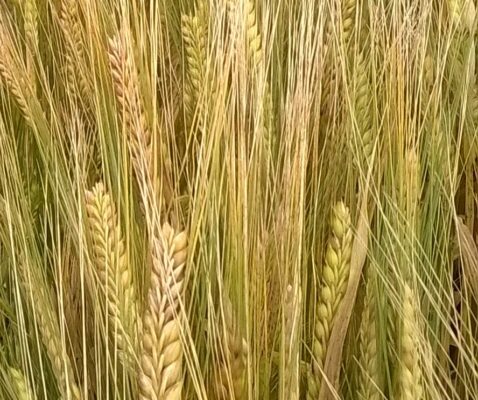Business and Policy November 2025 – Arable
3 November 2025Improving yields but mixed quality across Scotland
On 16th October, the Scottish Government released its initial estimates of area, yield and production for the 2025 harvest, covering winter and spring barley, wheat, oats and oilseed rape. Final figures will be published in December based on a larger sample of farms, but early indications suggest an overall improvement in yields compared with the previous year.
Spring barley production is forecast at around 1.65 million tonnes, close to the five-year average but 1% below 2024 due to a slightly smaller sown area. Despite the dry conditions, yields have held up reasonably well, although high rejection rates for malting quality mean a greater proportion is expected to go into feed markets.
Winter barley production is expected to reach 381 thousand tonnes, a 16% increase compared with 2024, driven primarily by a 15% rise in yield. Predicted yields of around 8.8 tonnes per hectare would mark a record high for this crop. Wheat production is also expected to increase significantly to just over one million tonnes, a rise of 23% on last year. This improvement reflects both a 12% gain in yield and a 10% expansion in sown area, although performance continues to vary between different soil types.
For oats, data remain limited at this early stage, but small yield increases combined with a 7% larger area could lift production above the five-year average. Oilseed rape production is forecast to rise by 15% to 152 thousand tonnes, despite an 11% fall in area, suggesting strong yield recovery after several difficult seasons.
By way of contrast, England’s 2025 harvest has been confirmed as the second worst on record, with yields far below expectations following one of the warmest springs and driest early summers in more than a century. Three of the five poorest harvests have now occurred within the past decade. According to the Defra report, wheat production reached 10.6 million tonnes, a 4.9% rise on 2024, but only due to an 8.8% increase in the planted area. Barley production dropped 14% to 4.2 million tonnes, driven by a 23% fall in spring barley and a smaller, 2.2% decline in winter barley. Oat output also slipped 2.3%, despite more land being used, as yields fell 11%. In contrast, oilseed rape provided a rare positive, with yields up 29% on 2024 and 17% above the five-year average.
Global Oversupply and Policy Uncertainty Shape Sentiment
Globally, the grain market remains well supplied, but several key uncertainties are shaping sentiment. The temporary shutdown of the USDA has limited market visibility, while attention focuses on the outcome of the ongoing US–China trade discussions and the potential impact of La Niña conditions on southern hemisphere production. A successful trade agreement between Washington and Beijing would likely strengthen both the dollar and agricultural commodity prices, whereas a breakdown in talks would have the opposite effect, pressuring oilseed and grain values lower.
In the United Kingdom, the feed wheat futures Nov-25 contract closed at a new contract low of £159.45/t on the 24th of October, down £5/t from the beginning of the month’s value. The wheat basis remains unusually strong however, standing at around seven to ten pounds per tonne above normal levels. This strength reflects several interacting factors, including low opening stocks, a smaller national harvest, slower import flows and a general reluctance among farmers to sell. With limited availability, feed compounders and millers have been forced to increase bids to attract tonnage, illustrating how local market tightness contrasts sharply with global abundance.
Diverging Crop Fortunes: Malting Barley and Oats Under Pressure
The oats and malting barley sectors are both struggling with weak consumption and heavy supply. Domestic oat markets are oversupplied and lack viable export outlets. Meanwhile, malting barley faces a global downturn as brewers and distillers continue to draw down existing stocks. Falling beer consumption, large whisky inventories, expanding Chinese malt exports and the impact of US tariffs have combined to reduce demand sharply. Prices for malting barley have fallen considerably, a situation that is economically unsustainable and there are indications growers are switching away from the crop. Some early 2026 demand remains, at or above, £170/t.
European wheat is currently the most competitively priced globally. Nevertheless, the broader outlook is dominated by heavy supply. All major exporters except Ukraine are forecasting higher wheat production for 2025. Argentina expects a harvest of 22 million tonnes compared with 18.5 million last year; Australia could produce up to 34.5 million tonnes, Canada anticipates 36.6 million tonnes, while the European Union’s output is set to rise by more than 22 million tonnes. Russia’s crop is also expected to increase by 5 million tonnes to around 88 million tonnes. Collectively, this represents an increase of over 30 million tonnes of global supply, while demand is expected to grow by only about 5 million tonnes. This imbalance will likely prevent any sustained recovery in international prices.
Structural Strain in Russia
Russia’s grain industry is undergoing a deep structural crisis. Despite large production figures, more than 35,000 farmers have gone bankrupt over the past five years due to the burden of export duties, quotas and shrinking margins.
Initially introduced as a temporary stabilising measure during the pandemic, export duties have remained in place and now provide an important source of revenue for the Russian state. In 2024, these duties generated an income equivalent to 1.78 billion pounds. While these measures have supported government finances, they have undermined the profitability of grain producers. Spring wheat area harvested in 2025 is the lowest level in a decade with growers stating they will switch to more profitable oilseed crops for 2026. This contraction threatens the government’s long-term plan to raise annual grain production to 170 million tonnes and exports to 80 million tonnes by 2030. The Russian case highlights how short-term fiscal policy can conceal underlying weakness within the agricultural sector.
| £ per tonne | Nov’25 | Mar ’26 | Nov ‘26 | |
|---|---|---|---|---|
| Wheat | Ex farm Scot Nov and Mar/Nov 26 Futures | 178 | 169 | 176 |
| Feed Spr. Barley | Ex farm Scot Nov and Mar/Nov 26 Futures | 120 | - | |
| Malting Barley | Ex farm contracted price | 170 | - | - |
| Milling Oats | Ex farm contracted price | 158 | ||
| Oilseed Rape | Del Montrose | 403 | 407 | - |
Indicative grain prices 24th October 2025 (Source: SAC//United oilseeds/AHDB/Hectare)
Sign up to the FAS newsletter
Receive updates on news, events and publications from Scotland’s Farm Advisory Service


